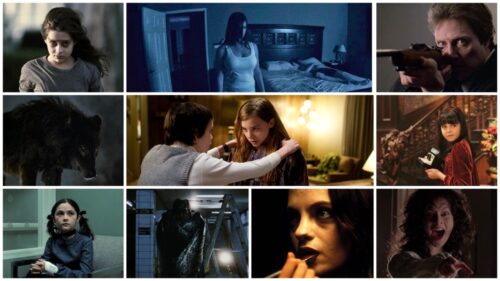Good parables explain themselves. After you have read the story of Lazarus in the Bible, you don’t need anyone to explain it to you. The same is true, I believe, of Stanley Kubrick‘s parable “2001: A Space Odyssey.” It contains the answers to all the questions it advances.
Why, then, has this film already infuriated and confused so many audiences? I went to see it again last week and was surrounded by the mumble of many conversations. Some of the whisperers were trying to figure out what was going on. Others were just killing time. Making up grocery lists, I guess.
After the film was over, someone suggested that maybe MGM should require an IQ test before allowing people into the theater. I can understand that point of view. If people do not have the courtesy to shut up during a film, they should at least be segregated into special Saturday kiddie matinees, no matter how advanced their years.
Silence and attention are especially useful during “2001: A Space Odyssey” because here for once is a film that makes a total statement. You cannot really understand part of it until you have seen all of it. Then, afterwards, you can go back and fill in the missing places. But while it is there on the screen, you should simply let it happen to you. No questions. No whispers. Let the movie have its chance. Because “2001” needs to be seen this way, I think it will have a better chance with younger audiences. Kubrick himself has speculated that his film wouldn’t have much luck with audiences raised on “linear movies” – that is, on movies that follow a plotted story line from beginning to end.
In a linear movie, you never ask why John Wayne wants to kill the bad guys (although perhaps you should). But in Kubrick’s movie, there are questions harder to answer. What about that enormous black monolith, for example, which follows Man through Kubrick’s universe?
The people who surrounded me the other night had lots of questions for each other about that monolith.
Q. What’s that big black monolith?
A. It’s a big black monolith.
Q. Where did it come from?
A. From somewhere else.
Q. Who put it there?
A. Intelligent beings since it has right angles and nature doesn’t make right angles on its own.
Q. How many monoliths are there?
A. One for every time Kubrick needs one in his film.
Now it would seem that these are obvious observations. But audiences don’t like simple answers, I guess; they want the monolith to “stand” for something. Well, it does. It stands for a monolith without an explanation. It’s the fact that man can’t explain it that makes it interesting.
If Kubrick had explained it, perhaps by having some little green men from Mars lower it into place, would that have been more satisfactory? Does everything need an explanation? Some people think so. I wonder how they endure looking at the stars.
What disturbed the audience even more, however, was that bedroom at the end of the film. Kubrick’s space explorer runs into another monolith beyond Jupiter and it takes him into a space warp.
Q. What’s a space warp?
A. A warp in space, and therefore in time, thanks to Einstein.
Q. Then when the pilot emerges into the objective world, where is he?
A. In a bedroom.
Q. A BEDROOM?
Yes, a magnificently decorated Louis XVI bedroom. What’s the bedroom doing out there beyond Jupiter? Nothing. It isn’t out there beyond Jupiter. It’s a bedroom.
The spacecraft lands in the bedroom, and Keir Dullea, the pilot, looks through the window and sees himself in a space suit standing outside. He gets out, becomes himself in the space suit standing outside, and sees himself seated at a table, eating. He becomes himself sitting at the table, eating, and notices himself, very elderly, dying in bed. He becomes himself dying in bed, and dies in bed.
Well, it’s not every space adventurer who dies in bed.
Now where did the bedroom come from? My intuition is that it came out of Kubrick’s imagination; that he understood the familiar bedroom would be the most alien, inexplicable, disturbing scene he could possibly end the film with. He was right. The bedroom is more otherworldly and eerie than any number of exploding stars, etc. Exploding stars we can understand. But a bedroom?
The bedroom also provides a suitable backdrop while Kubrick’s man grows older and dies. Why can’t it be just that – a backdrop? Poets put lovers under trees, and nobody asks where that tree came from. Why can’t Kubrick put his aging man in a bedroom? This is what literary critics might call a non-descriptive symbol – that is, the bedroom stands for a bedroom. Nothing else.
The film, in its most basic terms, is a parable about Man. It is what Kubrick wanted to say about Man as a race, an idea and an inhabitant of the universe.
More specifically, it is a film about man’s journey from the natural state of a tool-using state and then again into a higher order of natural state. It makes its statement almost completely in visual terms; and the little dialog in the center section of the film is hardly necessary, like verbal Muzak.
Kubrick begins when man was still an ape, thoroughly at home in the natural environment of Earth. He shows us becoming a toolmaker in order to control our natural environment, and he shows us finally using our tools to venture out into space. At the end, he shows man drawn beyond his tools so that we exist in the universe itself with the same natural ease we once enjoyed on Earth. The opening sequence is brilliant. If it could be shown as an educational film, it would explain man’s development as a tool-using animal more clearly than any number of textbooks. Two tribes of apes scream at each other. They are frightened of the sounds in the night. A monolith appears. One tribe of apes gingerly feels it, running its hands down its perfectly smooth edges. And as the apes caress the monolith, something like a short circuit takes place in their minds.
A connection is made between their eyes, their minds, and their hands. Their attention is drawn beyond themselves and toward an object in the environment. They are given a “lesson” by the makers of the monolith – and they then discover that, they are able to pick up a club and use it as a tool (at first for killing, then, for more subtle ends).
Kubrick cuts from this most simple tool, a club, to a most complex one, a space ship. The prehistoric bone is thrown up into the air and becomes a shuttle rocket on its way to a space station. Could anything be clearer? Here are both extremes of man’s tool-using stage. Yet, when the men in the space station began to talk, 45 minutes into the film, the person behind me sighed: “At last, the story begins.” This was a person for whom a story could not exist apart from dialog and plot, and audiences made up of those people are going to find “2001” tough sledding.
So what then? Another monolith is found on the moon.
Like the first one, it provides a transcendent experience. By now, man is intelligent enough to realize that the monolith was planted by another intelligent race, and that is an awesome blow to man’s ego. So he sets out toward Jupiter because the monolith beams signals in that direction. And man takes along “Hal 9000,” a computer (or tool) so complex that it may, even surpass the human intelligence. The ultimate tool.
But Hal 9000, made by man in his own image and likeness, shares man’s ego and pride. What is finally necessary is the destruction of Hal – after he nearly destroys the mission – and that leaves one man, alone, at the outer edge of the Solar System to face the third monolith.
And here man undergoes a transformation as important as when he became a tool-user. He becomes a natural being again, having used his tools for hundreds of thousands of years to pull himself up by the bootstraps. Now he no longer needs them. He has transcended his own nature, as that original ape did, and now he is no longer a “man.”
Instead, having grown old and died, he is reborn as a child of the universe. As a solemn, wide-eyed infant who slowly looks over the stars and the Earth and then turns his eyes on the audience.
These last 20 seconds, as the child of man looks down on his ancestral parents, are the most important in the film. We in the audience are men, and here is the liberated, natural being, Kubrick believes we will someday become.
But when Kubrick’s space infant looked at the audience the other night, half of the audience was already on its feet in a hurry to get out. A good third of the audience must not have seen the space infant at all.
Man is a curious animal. He is uneasy in the face of great experiences, and if he is forced to experience something profound, he starts immediately to cheapen it, to bring it down to his own level. Thus after a great man is assassinated, lesser men immediately manufacture, buy and sell plastic statues and souvenir billfolds and lucky coins with the great man’s image on them.
The same process is taking place with “2001.” Two out of three people who see it will assure you it is too long, or too difficult, or (worst of all) merely science fiction, In fact, it is a beautiful parable about the nature of man. Perhaps it is the nature of man not to wish to know too much about his own nature.












